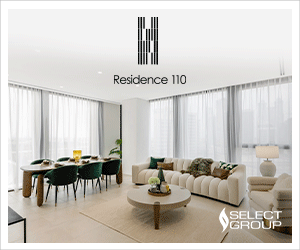Of the major sections in your home, your roof is one of the most crucial for your safety. It should be properly maintained to make sure it’s always in good shape. Problems with your roof can cause leaks that can compromise your property’s structural integrity, leading to costly repairs.
According to roofers in Springfield and other roofing experts, there are many factors impacting electricity costs. But did you know that a new roof can help you save money on energy bills? Installing a new one can help reduce your power requirements more efficiently than old roof shingles that use outdated materials and technologies.
This article would discuss how ecologically sustainable building standards and roof replacement projects can help a homeowner reduce utility bills further.
How Does Your Roof Affect Energy Costs?
In the United Arab Emirates (UAE), about 50% of household energy is spent on cooling. If you’ve got an outdated or poorly kept air conditioning system, this can dramatically increase costs compared to the latest and more energy-efficient units.
As the structures inside your home age, their efficiency rates also deteriorate. Loose windows, gaps in your doors, badly insulated basements, or a roof that’s breaking down will reduce the efficiency of your household appliances. This forces your heating and cooling systems to work harder to keep you comfortable.
Sustainable Initiatives In The UAE
The UAE government has initiated steps in ensuring sustainability, especially when it comes to constructing new buildings.
-
The Estidama Rating
When constructing a new building, developers in Abu Dhabi have to get a sustainability rating called Estidama, the Arabic term for ‘sustainability.’ Developed in 2009, this rating system aimed at ensuring that new projects are built in an ecologically sustainable manner.
Thus, before proceeding with the project, owners will have to present their vision for the building through a development review process. Depending on the type of development, the government will rate the project by issuing its ‘pearl ratings.’ Higher pearl ratings mean a more sustainable project. This initiative has undoubtedly resulted in more eco-friendly homes in UAE’s capital city.
-
Green Buildings In Abu Dhabi
In 2014, Dubai launched its environment-friendly initiative called ‘Green Building Specifications.’ Also called Sa’fat, this campaign has institutionalised sustainable practices in all new building developments, including privately owned projects. If you’re developing a project in the area, always take sustainability as your main consideration.
The standards for sustainability cover how the building is erected, its functionalities post-construction, and the way energy and other resources are used in the building itself. Most importantly, the guidelines consider the impact of these factors on the welfare of its occupants.
How A New Roof Can Reduce Power Costs
Be inspired by these initiatives and make sure you’re getting the most out of your roof replacement project by taking heed of the following points:
1. Enhancing Roof Ventilation
One of the roof’s basic functions is to facilitate proper airflow between the attic and the outdoors. Without proper air circulation, too much warm or cold air can get trapped inside the attic and seep inside your living spaces. When this happens, you’ll notice a huge spike in your power costs as your heating and cooling systems will have to work harder.
The Masdar City in Abu Dhabi may have been constructed in 2006, but it’s still one of the most sustainable urban projects in the region. The developers envisioned it to become the first project with zero carbon emission. As such, it aimed to use technology and solar energy to reduce overall energy consumption. The structure also optimises air traffic to provide natural ventilation to cool its occupants even during the summer season.
2. Installing Green Roofs
A green roof entails planting a layer of greenery on top of your roof’s waterproofing system. As such, it’s also called vegetative or eco-roofs. These environment-friendly roofs can save you on energy costs by improving your insulation system. An added insulation creates a barrier that minimises heat transfer from your roof to the attic and towards your home’s living spaces.
It’s not surprising that green roofs are one of the key features of the Aljada community project in Sharjah—the third most populous city in the UAE. Covering more than 2.2 million square meters of eco-friendly structures, including green spaces, the project is the biggest development project in the said city.
3. Increasing Solar Reflection
If your roof doesn’t reflect solar light properly, it can impact the heat that’s seeping inside your home. A less reflective roof can decrease energy efficiency as roof shingles will absorb solar heat faster and transfer it into your living spaces.
Cool roofs, which possess high solar reflectance properties, are new roofing technology that works to reduce heat and promote energy efficiency, allowing for 50-cent savings per square foot.
In most cases, projects have integrated the use of roofs and other building materials that reflect solar energy better. This is one of the basic principles embodied in some eco-friendly buildings in the UAE.
4. Utilizing Roof Materials Adhering to Emirates Energy Star Program
Getting an energy star rating for roof and building materials certifies the power efficiency of these consumer products. Roofs with energy star accreditation mean the roof is highly reflective of solar energy, preventing heat from seeping inside your home. Cool roofs often have energy star accreditation. UAE has its own Emirates Energy Star Program launched in 2010 to ensure buildings optimise and manage their energy use well.
Energy star-bearing roof products are capable of lowering roof surface temperature. And as the living spaces inside your home remain less warm, you can save on air conditioning and minimise power use.
Wrap Up
Learning from the UAE innovations, using advanced technologies and instituting sustainability in all projects can help ensure that structures, especially the roof, can help reduce energy consumption. Homeowners can never go wrong in building eco-friendly and more sustainable homes. If they don’t have the capacity to remodel their property, they can start with their roofs to reduce energy costs. Consider the ideas mentioned here as you plan for your new roof.



 Join Our Newsletter
Join Our Newsletter